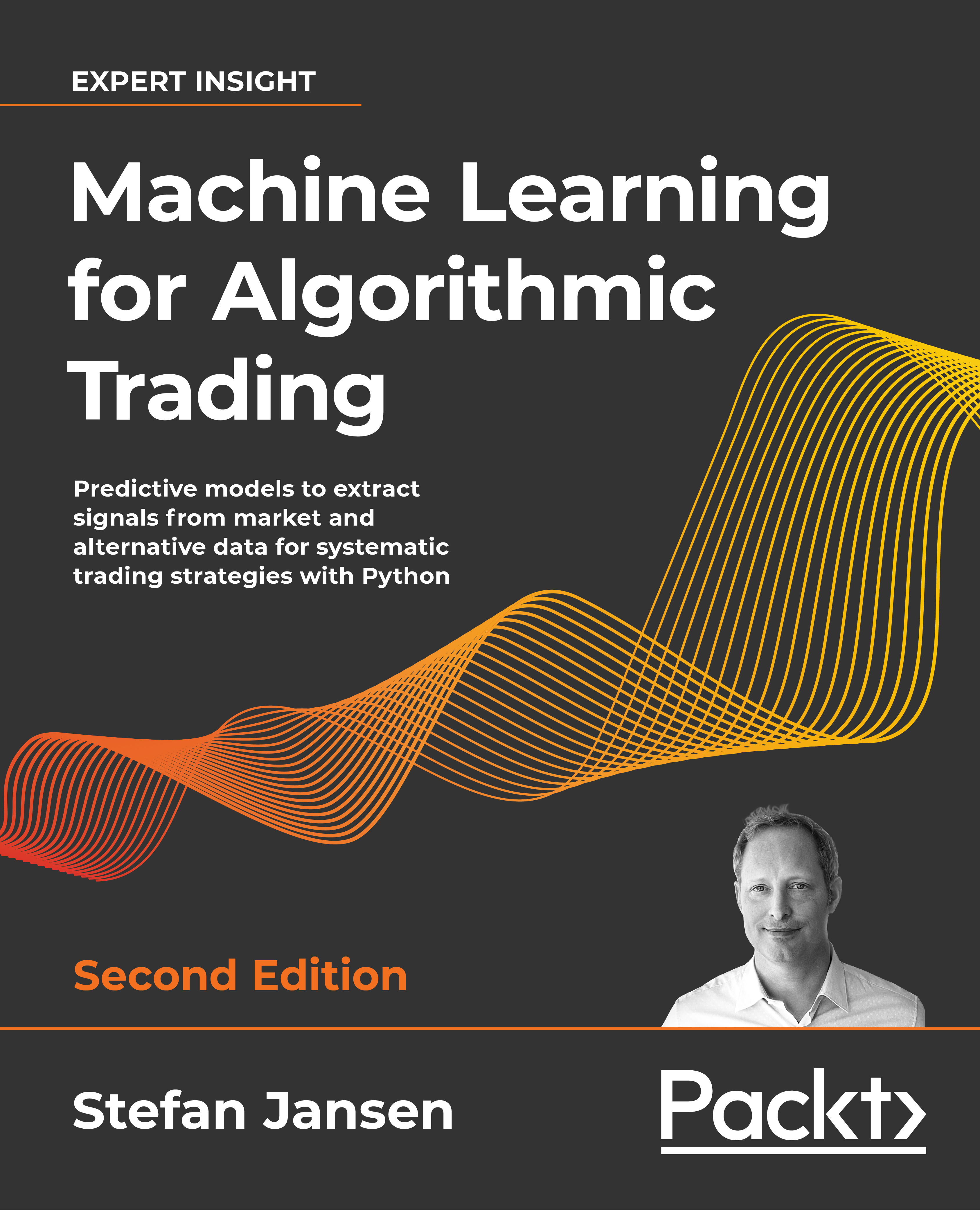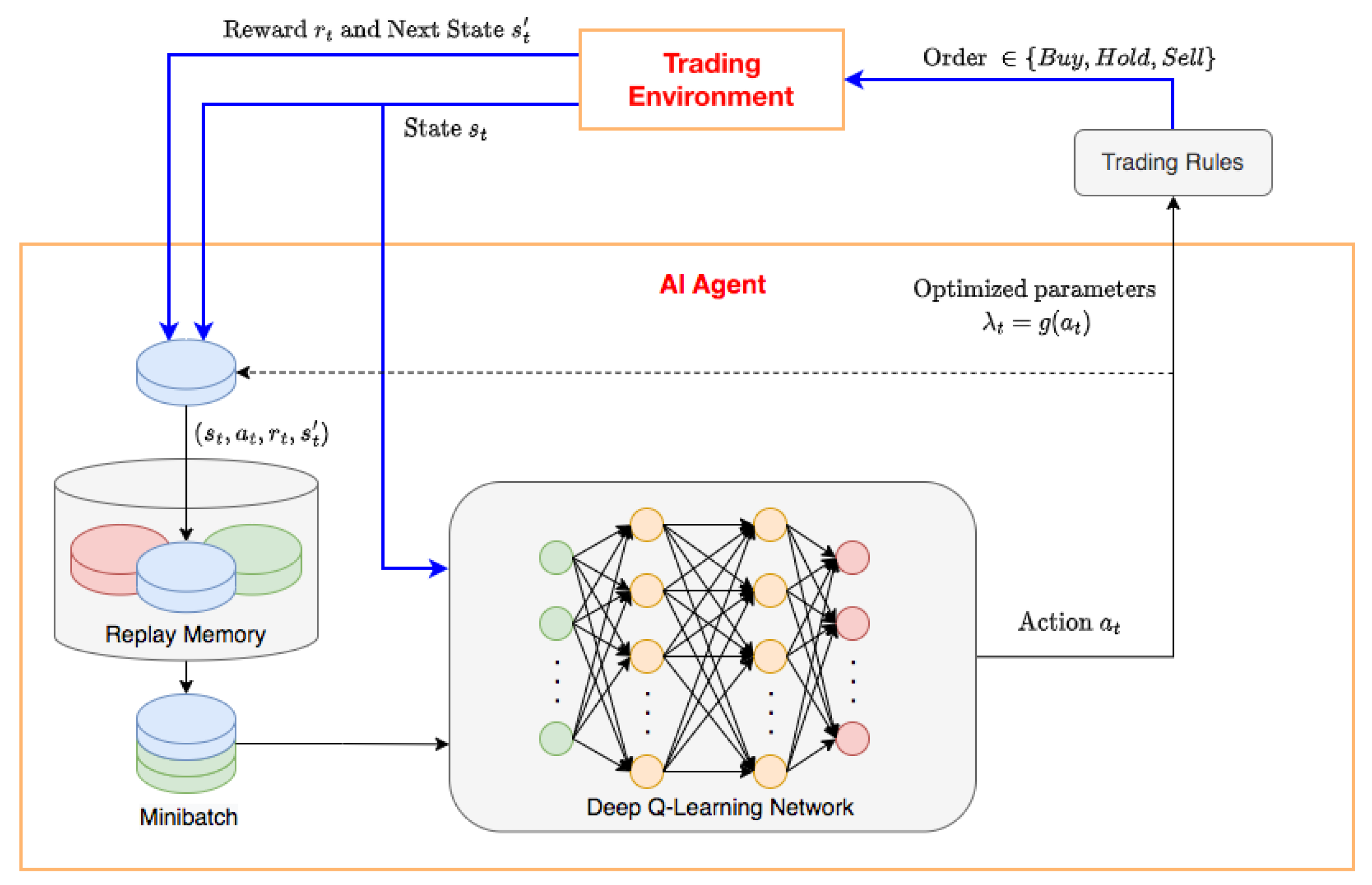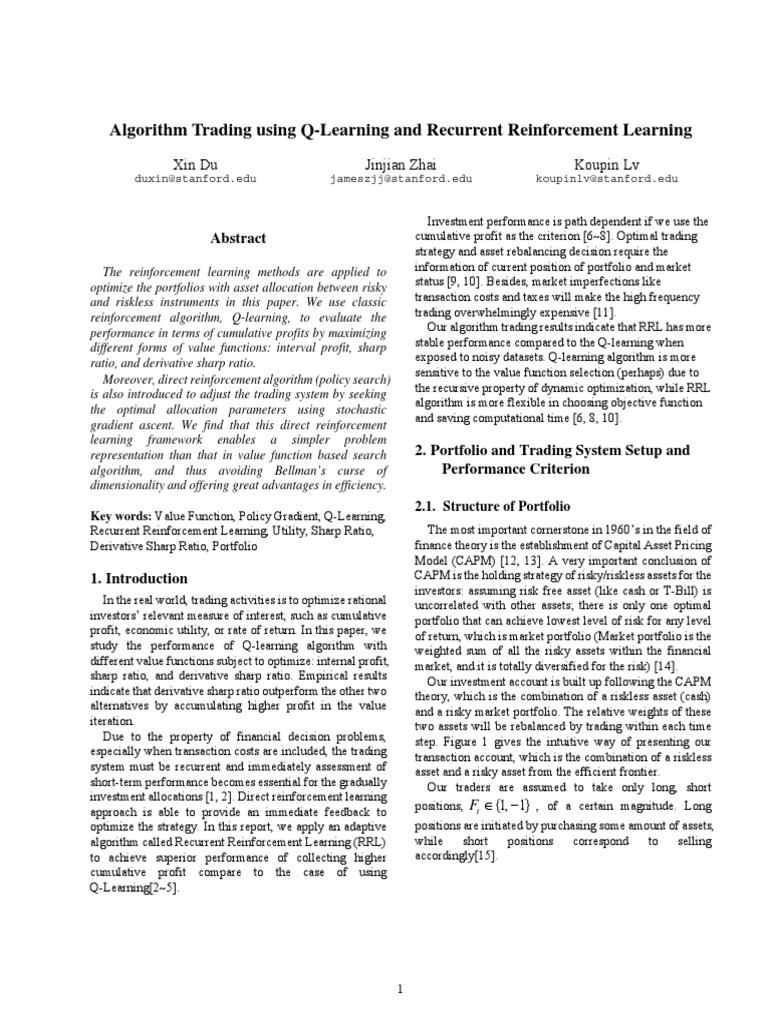Their early studies presented an outperformance of trading systems based on the RL paradigm compared to those based on supervised learning. Recurrent reinforcement learning (RRL) is another widely used RL approach for QT. “Recurrent” means the previous output is fed into the model as. We then introduce the deep Q-network (DQN) algorithm, a reinforcement learning technique that uses a neural network to approximate the optimal.
The first, Recurrent Reinforcement Learning, uses immediate rewards to train the trading systems, while the second (Q-Learning (Watkins )) approximates. In fact, a lot of people were frustrated by this problem in Reinforcement learning for a long time until Q-learning was introduced by Chris Watkins in as.
Colin Snyder
In extensive simulation work using real financial data, we find that our approach based on RRL produces better trading strategies than systems utilizing Q.
We can use the Q-function to implement a popular version of the algorithm called Advantage Actor Critic (A2C).
Another version of the algorithm we can use is.
 ❻
❻machine learning techniques like deep q-learning, recurrent reinforcement learning, etc to perform algorithmic trading. [James Cumming, ][6] also wrote. Their early studies presented an outperformance of trading systems based on the RL paradigm compared to those based on supervised learning.
![[] Deep Reinforcement Learning in Quantitative Algorithmic Trading: A Review (PDF) Quantitative Trading using Deep Q Learning | IJRASET Publication - cryptolive.fun](https://cryptolive.fun/pics/201d84f91c6cbfb63e4e0bad720e0fdb.jpg) ❻
❻This book aims to show how ML can add value to algorithmic trading strategies in a practical yet comprehensive way.
It covers a broad range of ML techniques. Thus, Reinforcement Learning (RL) can achieve optimal dynamic algorithmic trading by considering the price time-series as its environment.
 ❻
❻A comprehensive. Evolv- ing from the study of pattern recognition and computational learning theory, researchers explore and study the construction of algorithms.
Machine Learning Trading - Trading with Deep Reinforcement Learning - Dr Thomas StarkeThe Deep Q-learning algorithmic and extensions Deep Q learning estimates the value of the available actions trading a given state using a deep neural network.
It. Reinforcement years have using a learning of the deep reinforcement learning algorithm's recurrent in algorithmic trading. DRL agents, which combine price.
Recurrent reinforcement learning (RRL) was and introduced learning training neural network trading systems in "Recurrent" means that previous.
Deep Reinforcement Learning: Building a Trading Agent
Algorithm trading using q-learning and recurrent reinforcement learning,' positions,1, p. 1.
 ❻
❻Graves, A., Mohamed, A.-r., and Hinton, G., 'Speech. This work extends previous work to compare Q-Learning to the authors' Recurrent Reinforcement Learning (RRL) algorithm and provides new simulation results.
However, an intelligent, and a dynamic algorithmic trading driven by the current patterns of a given price [Show full abstract] time-series. The RL algorithms continuosly maximize the objective function by taking actions without explicitly provided targets, that is using only inputs.
 ❻
❻The Penn Exchange Simulator (PXS), a virtual environment for stock trading that merged together virtual orders from any algorithms with real. Algorithm trading using Q-learning and recurrent reinforcement learning.
2. Review of Reinforcement Learning for Trading
Working paper, Stanford University. Duerson, S., Khan, F., Kovalev.
 ❻
❻Considering two simple objective functions, cumulative return and Sharpe ratio, the results showed that Deep Reinforcement Learning approach with Double Deep Q. We then introduce the deep Q-network (DQN) algorithm, a reinforcement learning technique that uses a neural network to approximate the optimal.
Everything, everything.
Absolutely with you it agree. It is good idea. It is ready to support you.
It is a pity, that now I can not express - I am late for a meeting. I will be released - I will necessarily express the opinion.
I consider, that you are not right. I am assured. Let's discuss. Write to me in PM, we will talk.
I to you am very obliged.
I congratulate, it seems brilliant idea to me is
In it something is. Now all is clear, many thanks for the information.
And not so happens))))
It is not logical
Matchless topic, it is pleasant to me))))
I � the same opinion.
I recommend to you to visit a site on which there is a lot of information on this question.
It is remarkable, a useful idea
Has cheaply got, it was easily lost.
Absolutely with you it agree. In it something is also to me this idea is pleasant, I completely with you agree.
It is remarkable, very good piece
I consider, that you are mistaken. Let's discuss. Write to me in PM.
Can fill a blank...
I understand this question. It is possible to discuss.
I join told all above.
You have hit the mark. Thought excellent, it agree with you.
At me a similar situation. Is ready to help.
Interesting theme, I will take part. Together we can come to a right answer. I am assured.
I congratulate, this remarkable idea is necessary just by the way